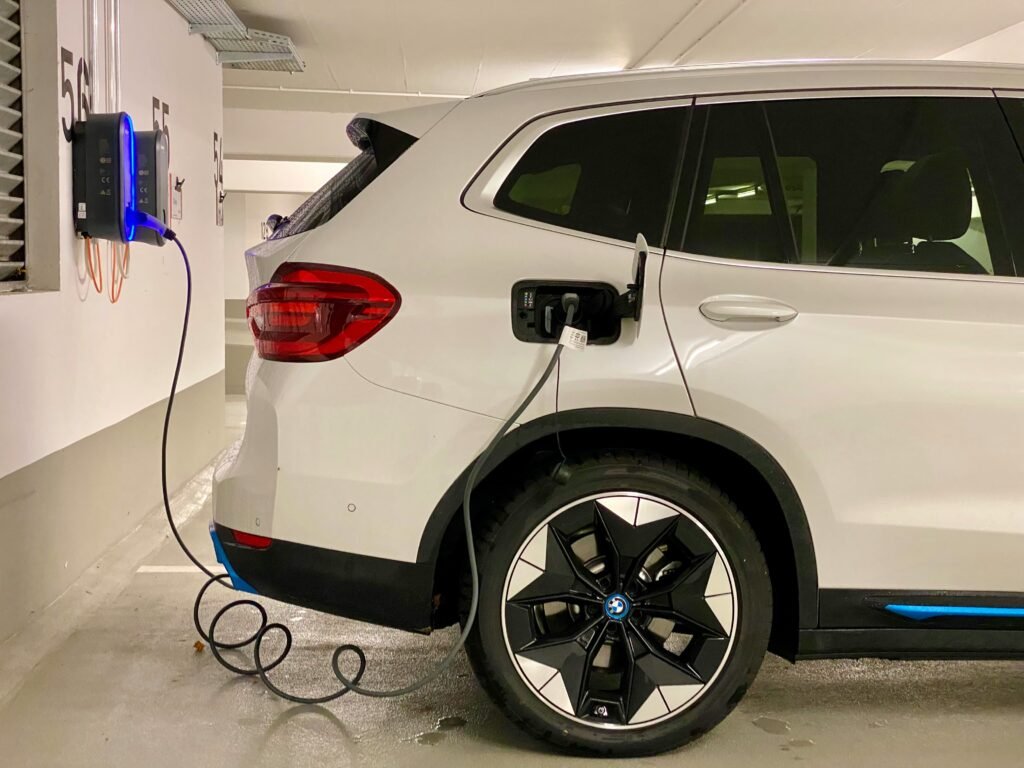
Introduction to Electric Car Ranges
The range of an electric vehicle (EV) refers to the distance an electric car can cover on a single charge of its battery. This metric is pivotal for potential buyers as it plays a significant role in their purchasing decisions. As EV technology has evolved, so has the focus on extending the range, with manufacturers striving to enhance battery efficiency and overall performance. A longer range allows drivers to travel greater distances without the frequent need for recharging, addressing one of the main concerns associated with electric vehicles—range anxiety.
Range anxiety manifests when drivers worry about depleting their battery power before reaching a charging station, leading many to hesitate at the thought of transitioning to an electric vehicle. Therefore, the concept of EV range has become increasingly important not only for consumers but also for manufacturers looking to boost sales in a competitive market. The growing significance of electric car range is evident as more consumers prioritize vehicles with a substantial driving distance per charge when considering their daily commuting needs, road trips, or general usage.
Moreover, advancements in battery technology, such as lithium-ion and solid-state batteries, have led to substantial improvements in energy density and performance. These developments are paving the way for electric cars that can travel hundreds of miles on a single charge, thus promoting the widespread adoption of EVs. As the global push for sustainable transportation grows, understanding the dynamics of electric car ranges becomes crucial for prospective buyers. The impact of EV range on consumer choices continues to shape the landscape of the automotive industry, highlighting its importance in the era of clean energy. Furthermore, it raises the bar for manufacturers as they innovate to produce vehicles that not only meet but exceed consumer expectations in terms of electric car range.
Factors Influencing Electric Car Range
The range of electric vehicles (EVs) is a critical aspect that potential buyers consider when transitioning from traditional internal combustion engine vehicles. Several factors influence how far an electric car can travel on a single charge, and understanding these factors can help users maximize their vehicle’s efficiency and performance.
One of the most significant determinants of electric car range is the battery size, typically measured in kilowatt-hours (kWh). A larger battery can store more energy, directly correlating with a longer potential range. However, battery technology also plays a crucial role; advancements in energy density mean that newer batteries can provide improved mileage without significantly increasing weight.
Speaking of weight, the overall mass of the vehicle is another key element affecting range. Heavier vehicles require more power to operate, which can deplete the battery more quickly. Therefore, automakers strive to design lighter structures using advanced materials, thus enhancing overall efficiency.
Aerodynamics also play a crucial role in determining range. Vehicles designed with streamlined shapes experience less air resistance, which allows them to consume less energy while in motion. Consequently, proper design can lead to significant improvements in range capabilities.
Driving habits are equally important; aggressive acceleration, high speeds, and rapid deceleration can all lead to increased energy consumption, adversely affecting range. Conversely, smooth and gradual driving can enhance efficiency, allowing for longer travel distances on a single charge. The terrain and climate conditions further compound these effects; driving uphill or in harsh weather, such as extreme cold or heat, can lead to added energy demands and reduced mileage.
In sum, various interrelated factors contribute to the overall range of electric vehicles. Understanding these facets can enable EV owners to make informed choices and adopt practices that enhance their driving experience.
Recent Innovations in Battery Technology
Recent advancements in battery technology are pivotal in improving the electric vehicle (EV) landscape. The conventional lithium-ion batteries have undergone significant enhancements, leading to increased energy density and efficiency. Manufacturers have been focused on optimizing the chemistry of these batteries, resulting in greater performance and longer life cycles. The introduction of nickel-rich cathodes, for instance, has allowed for a more substantial energy capacity while simultaneously reducing costs. This transformation in existing technologies plays a crucial role in extending the range of electric cars.
Moreover, research into solid-state batteries is making notable strides. Unlike traditional lithium-ion batteries that utilize liquid electrolytes, solid-state batteries employ a solid electrolyte, which can increase energy density significantly. This innovation promises improved safety profiles by minimizing the risk of leakage or thermal runaway, common concerns associated with liquid-based systems. Some experts predict that solid-state batteries could provide two to three times the energy density of their lithium-ion counterparts, which would potentially double the range of electric vehicles. Furthermore, such batteries may enable faster charging times, reducing the dreaded “range anxiety” that many users face.
In addition to these technologies, there is ongoing interest in alternative battery materials. Researchers are exploring sodium-ion and lithium-sulfur batteries as viable options to diversify the energy storage market. Both of these alternatives show promise for offering enhanced performance metrics compared to traditional batteries. As these innovations reach commercialization, consumers can expect electric vehicles with dramatically improved ranges and lower operational costs.
To summarize, the battery technology landscape is evolving, presenting numerous innovations that promise to enhance the travel distances of electric vehicles. With these advancements on the horizon, consumers can anticipate a future marked by longer ranges and more efficient electric mobility solutions.
Top Electric Cars with Longest Range
The electric vehicle (EV) market has made significant strides in recent years, with manufacturers pushing the boundaries of range and efficiency. Below is a curated list of some of the top electric cars currently boasting the longest range per charge, making them excellent choices for those who prioritize distance in their driving experience.
First on the list is the Tesla Model S Long Range, known for its impressive maximum range of approximately 405 miles on a single charge. This vehicle utilizes a robust 100 kWh battery, which not only enhances its range but also contributes to its high performance, allowing it to accelerate from 0 to 60 miles per hour in just 3.1 seconds. The Tesla Model S is also equipped with advanced autopilot features, providing a futuristic driving experience.
Following closely is the Lucid Air Dream Edition, which boasts a remarkable range of up to 503 miles per charge. Its 113 kWh battery facilitates optimal energy efficiency, while the car’s aerodynamic design minimizes drag. The Lucid Air is also celebrated for its luxurious interior and state-of-the-art technology, including an expansive dual-screen interface for navigation and entertainment.
The Ford Mustang Mach-E, an entry from a traditional automotive manufacturer, has garnered attention with its extended range of about 300 miles. It features a 99 kWh battery and brings performance along with practicality. This model emphasizes versatile driving modes and spacious cargo options, making it an ideal family vehicle. Interestingly, the Mustang Mach-E also includes advanced infotainment features, integrating seamlessly with mobile devices.
Lastly, the Hyundai Ioniq 5 emerges as a competitive entry, offering an impressive range of around 300 miles. Powered by a 77.4 kWh battery, the Ioniq 5 is known for its ultra-fast charging capability and futuristic design. With spacious interior dimensions and advanced safety features, this vehicle presents a well-rounded option for daily commutes and longer journeys alike.
These electric cars not only showcase the longest ranges available in the market but also incorporate innovative technologies and features, ensuring they meet diverse consumer needs while promoting sustainable driving choices.
Real-World Testing and Range Claims
As the popularity of electric vehicles (EVs) grows, understanding the accuracy of range claims made by manufacturers is increasingly important for potential buyers. Often, the advertised range can differ significantly from what consumers experience in real-world conditions. This discrepancy arises due to various factors including driving habits, terrain, and environmental conditions. For instance, many manufacturers conduct their range tests under controlled circumstances, which can create an idealized version of performance that does not reflect everyday driving experiences.
Independent testing organizations play a critical role in evaluating electric vehicle ranges. They utilize standardized testing protocols to assess the performance of different EV models rigorously. These tests typically consider a range of real-world scenarios, including city and highway driving, acceleration patterns, and the use of climate control systems. Such comprehensive evaluations often produce more reliable data on the vehicle’s range, shedding light on how various external factors can impact battery life and overall performance.
Furthermore, several aspects can lead to differences between tested and advertised ranges. Temperature has a notable impact; colder climates can diminish battery efficiency, leading to a shorter range. Additionally, driving style can greatly influence energy consumption; aggressive acceleration and higher speeds generally reduce overall efficiency. Moreover, the additional use of vehicle accessories, such as air conditioning or heating, can also drain the battery more quickly than anticipated.
As consumers become more informed and demand transparency regarding range capabilities, it becomes essential for manufacturers to provide more accurate data. By relying on independent evaluations, potential buyers can better understand the true capabilities of electric vehicles, helping them make more informed purchasing decisions. A clear understanding of the factors affecting EV range ultimately empowers consumers to choose vehicles that best meet their needs and driving habits.
The Importance of Range Anxiety
Range anxiety refers to the apprehension experienced by electric vehicle (EV) users regarding the possibility of depleting their battery before reaching their destination or a charging station. This concern is especially pertinent among potential buyers of electric cars, who may worry about the limited distance an EV can travel on a single charge compared to traditional gasoline vehicles. The development and awareness of battery technology have advanced tremendously, yet range anxiety remains a significant psychological barrier to EV adoption.
Manufacturers are actively working to alleviate these concerns by enhancing the range of their electric vehicles through improved battery technology and more efficient power management systems. Many modern EVs now offer ranges that surpass those of earlier models, with some capable of traveling over 300 miles on a single charge. Furthermore, manufacturers are increasingly incorporating real-time monitoring tools that assist drivers in tracking their battery status, thus empowering them to plan their trips more methodically and with increased confidence.
Additionally, the expansion of charging infrastructure is crucial in addressing range anxiety. The growth of fast-charging stations strategically located along major highways and urban areas allows drivers to recharge their vehicles quickly, making long-distance travel more feasible. Furthermore, some companies are deploying mobile apps that provide users with information about charging station locations, availability, and estimated wait times, which further assists in alleviating range anxiety.
Drivers can also adopt personal strategies to manage their range effectively. For instance, understanding the factors that influence battery consumption, such as driving speed and climate control usage, can enable EV users to maximize their vehicle’s efficiency. By planning trips carefully and utilizing the latest charging technologies, drivers can mitigate their concerns regarding range anxiety while enjoying the numerous benefits that electric vehicles have to offer.
Charging Infrastructure and Its Role in Range
The charging infrastructure plays a crucial role in the effective utilization of an electric vehicle’s (EV) range. As the popularity of electric vehicles rises, it becomes increasingly essential to understand the different types of charging stations and their impact on the confidence of potential EV owners. Charging infrastructure can be classified mainly into three categories: Level 1, Level 2, and DC Fast Charging.
Level 1 charging uses a standard household outlet and serves primarily as an overnight charging solution. This method can replenish an EV’s battery at a rate of about 4 to 5 miles of range per hour, making it suitable for highly consistent users with short commutes. Level 2 charging stations, typically found in public spaces and businesses, offer faster charging, delivering approximately 10 to 60 miles of range per hour, depending on the vehicle and station specifications. This level significantly enhances the practicality of owning an electric car, as it can accommodate more varied use cases and reduce range anxiety.
On the other hand, DC Fast Charging is designed for rapid charging, providing an output large enough to recharge an EV to about 80% in as little as 30 minutes. This type of charging is instrumental for long distances and road trips, allowing drivers to quickly restock their vehicle’s energy and continue their journey. Accessibility to these various charging points considerably influences EV ownership; readily available infrastructure can enhance consumer confidence in electric vehicles, fostering a more significant transition from traditional gasoline-powered cars.
Moreover, the growing network of charging stations can alleviate concerns regarding the range of electric vehicles. As facilities become more accessible, potential buyers gain assurance, knowing they can recharge conveniently and efficiently. This shift towards a robust charging infrastructure is essential for maximizing the potential driving range and optimizing the ownership experience of electric vehicles.
Future Trends in Electric Vehicle Ranges
The ongoing evolution of electric vehicles (EVs) is largely driven by advancements in battery technology, policy changes, and shifting consumer preferences. It is projected that the electric car range per charge will continue to increase, largely due to innovations in battery chemistry and architecture. Manufacturers are investing heavily in technologies such as solid-state batteries, which promise higher energy densities and faster charging times. These breakthroughs could lead to significant boosts in driving ranges, potentially surpassing current benchmarks.
Additionally, the development of ultra-fast charging networks is expected to alleviate range anxiety among consumers. The expansion of charging infrastructure, coupled with improvements in fast-charging capabilities, will allow EVs to recharge significantly quicker, thus making long-distance travel more feasible. The global push for electric mobility, reinforced by government initiatives and incentives, further compels manufacturers to prioritize range optimization. Policymakers are increasingly setting ambitious targets for reducing carbon emissions, effectively urging automakers to produce vehicles that not only meet but exceed consumer expectations in range performance.
Consumer behavior is also shifting, with more individuals prioritizing sustainability and the environmental impact of their vehicle choices. As awareness grows, the demand for longer-lasting EV ranges per charge will likely intensify, compelling automakers to innovate continually. Companies that are proactive in enhancing range capabilities while maintaining vehicle efficiency stand to capture significant market share amidst this evolution.
In conclusion, the future of electric vehicle ranges appears bright, with ongoing advancements in technology and strong policy support paving the way for enhanced performance. As the automotive industry adapts to these changes, consumers will benefit from improved ranges and a more viable transition to electric mobility.
Conclusion: The Road Ahead for Electric Car Ranges
As the automotive industry undergoes a significant transformation towards electrification, understanding the intricacies of electric car ranges is paramount for prospective buyers. The range of an electric vehicle (EV) refers to the distance it can cover on a single charge, a vital aspect that heavily influences consumer decisions. Key factors impacting electric car range include battery capacity, vehicle weight, aerodynamics, and energy efficiency. It is increasingly evident that advancements in battery technology and design will play a crucial role in enhancing these ranges further.
Recent developments indicate that manufacturers are investing in high-density battery packs and innovative charging technologies to extend the driving range of electric vehicles. For example, solid-state batteries and enhancements in lithium-ion technology promise significant improvements in both capacity and safety, thereby allowing cars to travel greater distances between charges. Potential breakthroughs in battery recycling and sustainability also highlight an encouraging trend that will optimize the entire lifecycle of electric vehicle batteries.
Additionally, improvements in EV infrastructure, such as fast-charging stations and widespread charging networks, are anticipated to alleviate range anxiety experienced by current and future electric vehicle owners. As the availability of convenient charging options increases, consumers may prioritize range less, focusing instead on the integration of EVs into their daily lives. Moreover, government incentives and support for electric vehicles continue to gain momentum, further broadening access to a market that is swiftly adapting to an environmentally conscious future.
In conclusion, the evolving landscape of electric vehicles emphasizes the importance of understanding electric car range and the factors that influence it. Continued innovation and infrastructure development will play an integral role in shaping the future of sustainable transportation, ultimately paving the way for a broader adoption of electric cars. As we advance, consumers can anticipate a host of exciting changes that promise to redefine their driving experience.



